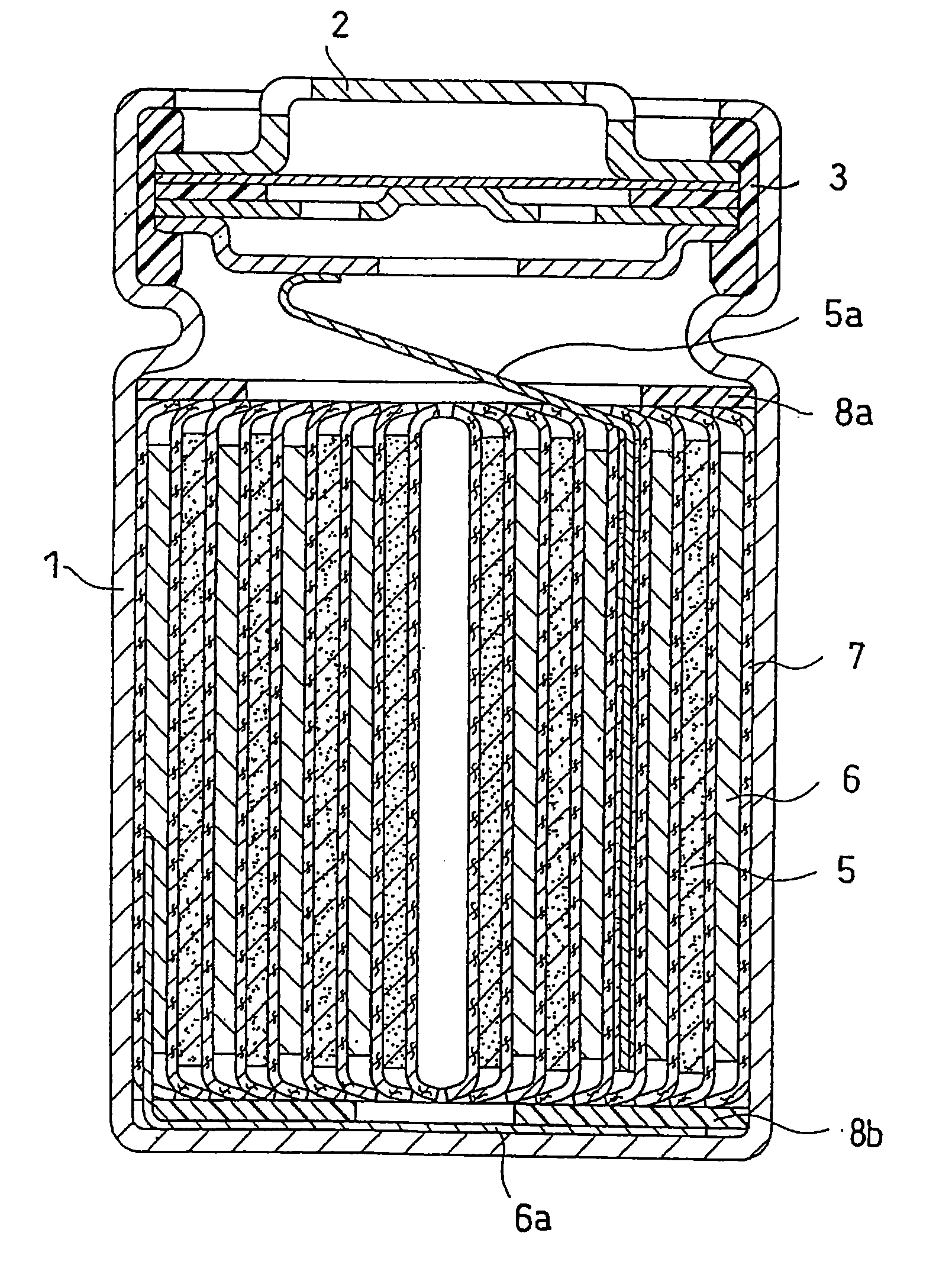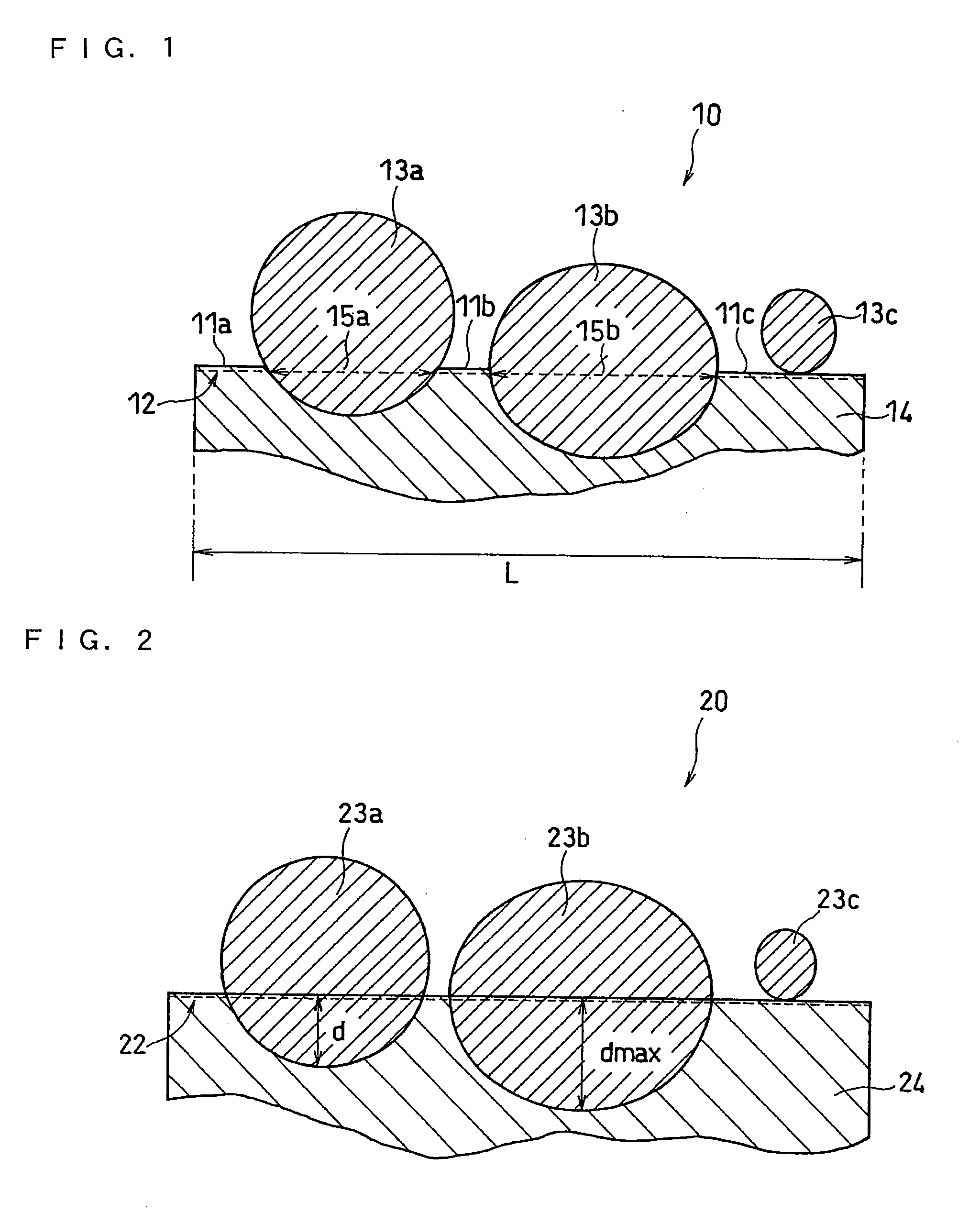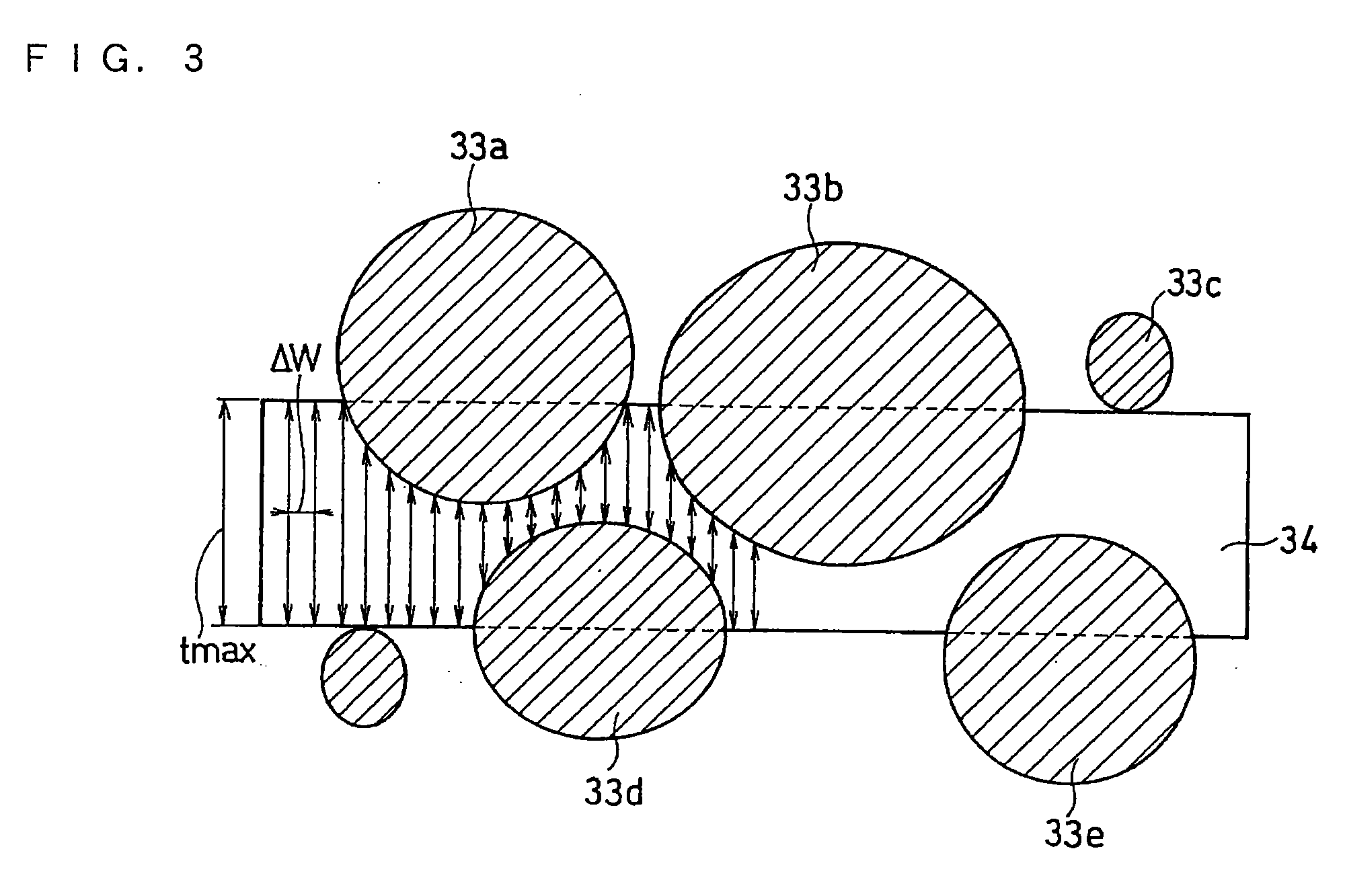Electrode for lithium ion secondary battery
- Summary
- Abstract
- Description
- Claims
- Application Information
AI Technical Summary
Benefits of technology
Problems solved by technology
Method used
Image
Examples
example 1
(i) Production of Positive Electrode
[0043]As a positive electrode active material, LiCoO2, that is, a lithium-containing composite oxide represented by formula (1): LixCo1-y-zNiyMzO2 where y=z=0, having an average particle size of 7.5 μm was used.
[0044]The positive electrode active material was mixed with acetylene black serving as a conductive material and polytetrafluoroethylene (PTFE) serving as a binder at a weight ratio of 90:5:5, to which an appropriate amount of an aqueous solution of 1 wt % carboxymethyl cellulose (CMC) was added so as to obtain a positive electrode material mixture slurry.
[0045]The positive electrode material mixture slurry was applied onto both surfaces of a 15 Nm thick aluminum foil serving as a current collector, followed by drying at 110° C. The current collector was then heated at 275° C. for 6 hours to soften the current collector. Subsequently, the current collector carrying the positive electrode material mixture was rolled with a linear pressure of...
examples 2 to 57
[0051]Positive electrodes were produced in the same manner as in Example 1, except that lithium-containing composite oxides (average particle size: 7 to 8.5 μm) represented by formula (1): LixCo1-y-zNiyMzO2 where the value of y and the value of x were changed as shown in Tables 1 and 2, was used as the positive electrode active materials. Then, lithium ion secondary batteries were produced in the same manner.
examples 58 to 60
[0052]An aluminum foil serving as a current collector was rolled by three types of embossed rollers having different irregularities to form recessed portions on both surfaces of the aluminum foil. The rollers had a diameter of 150 mm, and the roller surfaces were embossed using a YAG laser (ML-2650B) available from Miyachi Corporation. Using three current collectors thus produced, three positive electrodes were produced in the same manner as in Example 1, except that the current collectors were not subjected to the softening process. Then, three lithium ion secondary batteries were produced in the same manner.
PUM
 Login to view more
Login to view more Abstract
Description
Claims
Application Information
 Login to view more
Login to view more - R&D Engineer
- R&D Manager
- IP Professional
- Industry Leading Data Capabilities
- Powerful AI technology
- Patent DNA Extraction
Browse by: Latest US Patents, China's latest patents, Technical Efficacy Thesaurus, Application Domain, Technology Topic.
© 2024 PatSnap. All rights reserved.Legal|Privacy policy|Modern Slavery Act Transparency Statement|Sitemap



